The 2015 BMW 7 Series has renewed the brand’s assault on the luxury class.
Set to go on sale in the UK on 24 October, the upmarket saloon has been comprehensively re-engineered in a move that sees it shed up to 130kg over its predecessor through the adoption of a new hybrid construction process that uses varying forms of carbonfibre in load-bearing areas of its body structure.
Further developments include newly developed in-line six-cylinder petrol and diesel engines and a plug-in hybrid model with an electric range of up to 25 miles. The 7 Series also gets a heavily reworked chassis that combines four-wheel steering with four-wheel drive for the first time, a remote parking system that allows you to step out of the car before it parks itself and a series of new iDrive control functions, including both touch and gesture controls that allow the driver to deliver commands with a wave of the hand.
2015 BMW 7 Series driven - read the first drive verdict here
The new 7 Series, codenamed G11 (short wheelbase) and G12 (long wheelbase), maintains the visual identity of the previous-generation model. The traditional three-box silhouette is retained, albeit with a slightly more raked rear window and a more heavily sloping boot lid that serve to provide it with a sleeker profile.
Among the detail changes are a more prominent kidney grille with flaps that open to increase airflow to the engine bay when required, larger LED headlights (with optional laser high beams from the i8), a more heavily structured front bumper with integral LED foglights and a more heavily contoured bonnet.
Along the flanks there is now a more pronounced shoulder, a taller glasshouse and a chrome highlight that runs from the air breather behind the front wheel arches and along the lower edges of the doors. The rear is distinguished by a high-set boot, traditional L-shaped tail-lights joined by a chrome strip and tail pipes set within the rear valance panel.
BMW has also developed four different styling packages for the new car: standard, M Sport, Pure Excellence and Individual.
At 5098mm in length, 1902mm in width and 1478mm in height, the new 7 Series is 19mm longer and 7mm higher than its predecessor in standard wheelbase guise, although it is the same width as before. The long-wheelbase variant gains an added 139mm in length, making it 18mm longer than the car it replaces, at 5238mm.
Both the standard and long-wheelbase variants share the same wheelbase measurements as the old 7 Series models, at 3070mm and 3210mm respectively. The front track has increased by 7mm in width at 1618mm, while the rear track is reduced by 4mm at 1646mm.
As with the exterior, the interior receives an evolutionary design update with a newly designed dashboard, controls and trims. Among the highlights are new digital instrument graphics that light up in either white, blue or red depending on the driving mode, a redesigned multi-function steering wheel and new front seats with ventilation and massage functions.
A long list of interior options includes items such as a heat comfort package which not only includes the seats and steering wheel but also the armrests in the doors, centre console and rear centre armrest. There is also a high-end Bowers and Wilkins surround-sound system, night vision, a glass roof that can be switched between six colours, inductive mobile phone charging and a head-up display featuring a 75% larger screen than before.
The big news is the appearance of a fifth-generation iDrive system. The significantly reworked set-up introduces new touchpad and touchscreen functions as part of an optional Navigation System Professional, allowing you to operate the various functions in a similar style to that of a smart phone with familiar pinch, point and swipe commands, or alternatively in a traditional manner via an updated rotary dial mounted on the car’s broad centre console.
There’s also optional gesture control for the first time. It uses a three-dimensional sensor mounted within the headlining to detect hand movements that are used to control functions including the volume of the audio system as well as the acceptance or rejection of calls. The new system detects five different gestures, including clamp, point, rotate, swipe and a two-finger command.
BMW’s new 7 Series will be launched with the choice of just two engines in the UK, both mated to a standard eight-speed automatic gearbox that uses a longer final drive ratio and a shift strategy that operates in conjunction with the satellite navigation system. Buyers can choose a Steptronic variant of the ZF-produced gearbox with shift paddles on the steering wheel as an option. It uses its own unique software mapping for sportier shifts and an integral launch control function.
The expected volume seller in the UK is the 730d, which receives BMW’s new B57 engine. The turbocharged 3.0-litre six-cylinder unit uses a new injector system that operates at 2500bar. It develops 7bhp and 45lb ft more than the N57-designated engine it replaces, with 261bhp and 457lb ft.
This is sufficient to provide the only diesel-powered model in the initial line-up with a 0-62mph time of 5.8sec and a 155mph top speed. BMW claims that it also brings an impressive 12.4mpg improvement in fuel consumption, at 62.8mpg, and a 29g/km reduction in CO2 emissions, at 119g/km.
The petrol engine is a new turbocharged 3.0-litre in line six-cylinder, the B58, which powers the 740Li. With 321bhp and 332lb ft, it delivers 6bhp and the same torque as the older N55 unit, endowing it with a 0-62mph time of 5.5sec and 155mph top speed along with combined fuel consumption of 42.8mpg and 154g/km of CO2.
In the first half of 2016, BMW will also provide the 7 Series with a plug-in hybrid petrol-electric system in a new 740e model. Already employed in the X5 xDrive40e, it uses BMW’s new B48 turbocharged 2.0-litre four-cylinder petrol engine and an electric motor mounted within the gearbox to provide a combined output of 321bhp, 0-62mph in 5.6sec and a 149mph top speed in hybrid mode.
In electric mode, it is claimed to provide a zero-emission range of up to 25 miles at speeds of up to 75mph. The new 740e is rated at 134.5mpg, with average CO2 emissions of just 49g/km.
The twin-turbocharged 4.4-litre V8 petrol unit will appear next year in the 750i Xdrive. The 90deg engine delivers 444bhp but, through a series of upgrades that include new twin-scroll turbochargers and a higher 10.5:1 compression ratio, it now provides an added 37lb ft of torque at 479lb ft. This gives the range-topping 7 Series a 0-62mph time of 4.4sec, a 155mph top speed, combined fuel consumption of 34.9mpg and CO2 emissions of 189g/km. A twin-turbo 6.0-litre V12 twin turbo is also set to join the 7 Series range later in its life. The V8 and the V12 are also set to be used by Rolls-Royce.
To further boost the model’s presence in the luxury performance market, BMW is looking at creating a new M7 or M750i M Performance version, likely to receive a heavily tuned version of the M5’s twin-turbo 4.4-litre V8 producing more than 600bhp.
All engines come as standard with an enhanced Drive Experience Control function, allowing the driver to choose between Comfort, Sport, Eco-Pro and a new adaptive mode that monitors your driving and automatically adjusts the car to suit. As in other recent new BMWs, the brake energy regeneration and automatic start-stop systems are complemented by a fuel-saving coasting function which decouples the engine on a periods of trailing throttle at speeds between 31 and 100mph.
All versions come with rear-wheel drive as standard. However, the optional four-wheel drive adds 70kg to the kerb weight.
The new 7 Series rides on a heavily reworked suspension system. It adopts air springs front and rear, rather than just at the rear as previously, providing constantly variable damping control, automatic self-levelling and the ability to alter the nominal 135mm ride height on the go. The driver can raise ground clearance by 20mm at the press of a button at speeds below 22mph, while in Sport mode the ride height is automatically reduced by 10mm at certain speeds for improved aerodynamic efficiency.
The new car also comes with optional electro-hydraulically operated roll bars as part of the Executive Drive Pro function on all but the 740i and 740e. They replace the previous hydraulically operated roll bars, bringing what BMW describes as faster damper reaction times for improved ride comfort, a more progressive build-up of lean and reduced levels of body roll.
As part of BMW’s weight-saving efforts, the wheel carriers, brake caliper housings, brake disc carriers and rear transverse suspension arms are all made of aluminium. Altogether some 40kg has been saved over the old 7 Series, bringing an impressive 10kg reduction in un-sprung mass at each corner. BMW also claims a perfect 50/50 front/rear weight distribution, while the efforts to trim weight within the body structure have also reduced the centre of gravity.
Allied to the new suspension is a new electro-mechanical steering system. The new 7 Series also offers an optional rear-wheel steer function on both rear and four-wheel-drive models. It provides up to 3deg of countersteer for added manoeuvrability around town, or alternatively 2deg of parallel steer for greater agility on the open road.
In what BMW is billing as a world first, the new 7 Series is capable of parking itself without the need for a driver to be behind the steering wheel. The so-called Remote Control Parking function uses a stereo camera mounted within the windscreen and radar sensors to allow forwards and reverse parking manoeuvres at the press of a button on the new digital key fob.
The 7 Series will cost from £64,530 in the UK for the 730d in short-wheelbase form and in standard trim. The petrol range starts at £72,060. Upgrading to M Sport trim puts £3650 onto the price, while long-wheelbase models add £3950 and xDrive models are £2730 more expensive.
Among the key rivals for BMW's 7 Series will be the new Audi A8, which has also been spotted testing, and the latest Mercedes-Benz S-Class.
Read more:

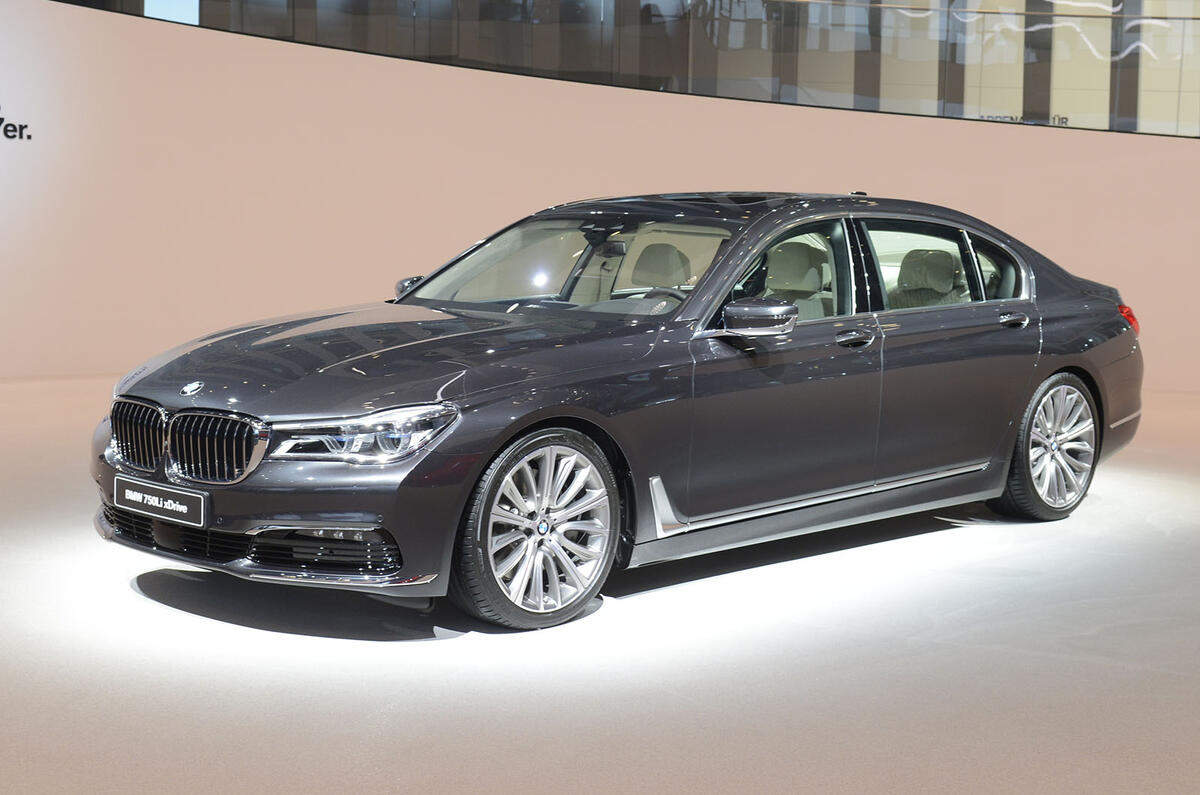











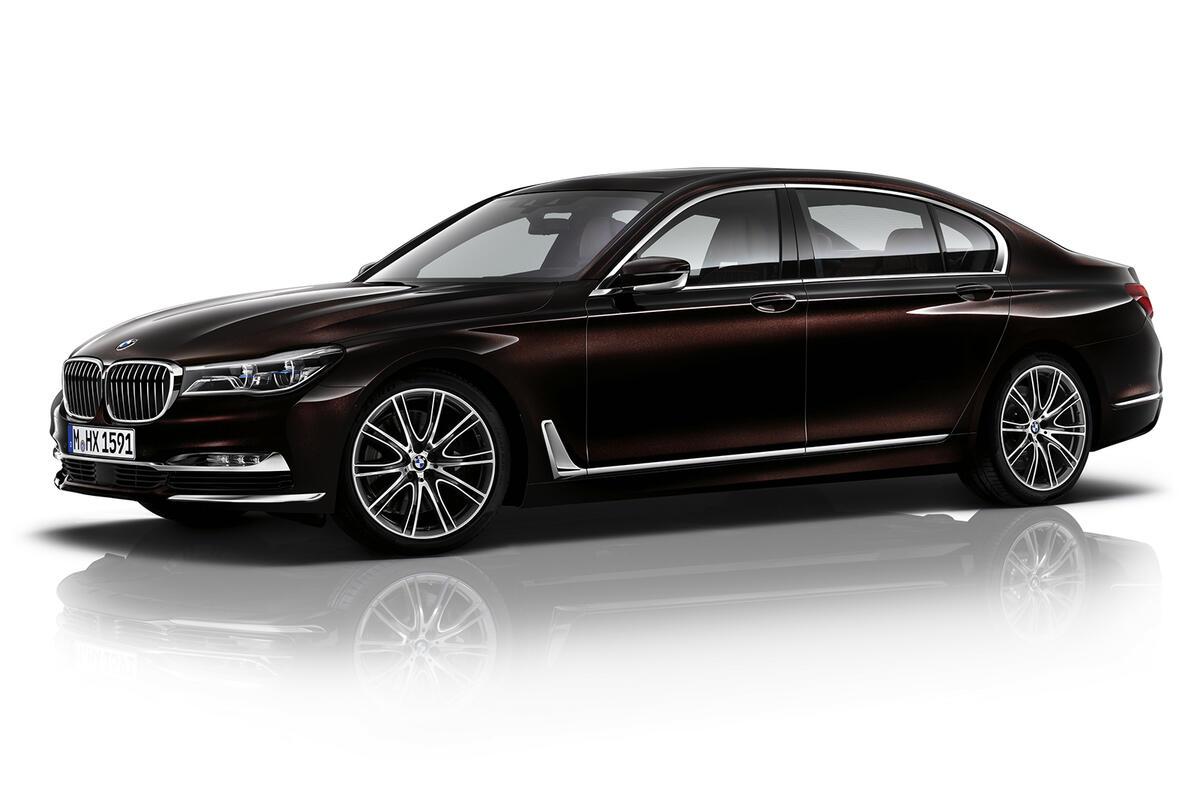


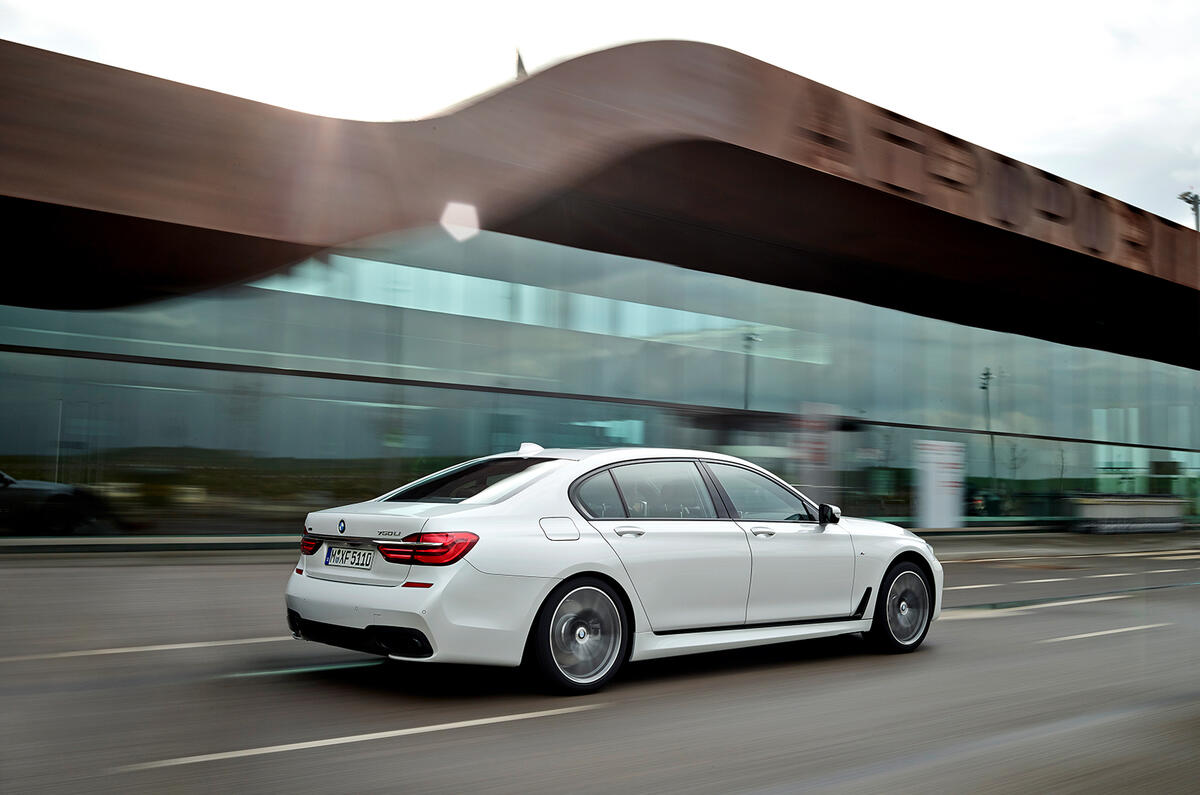

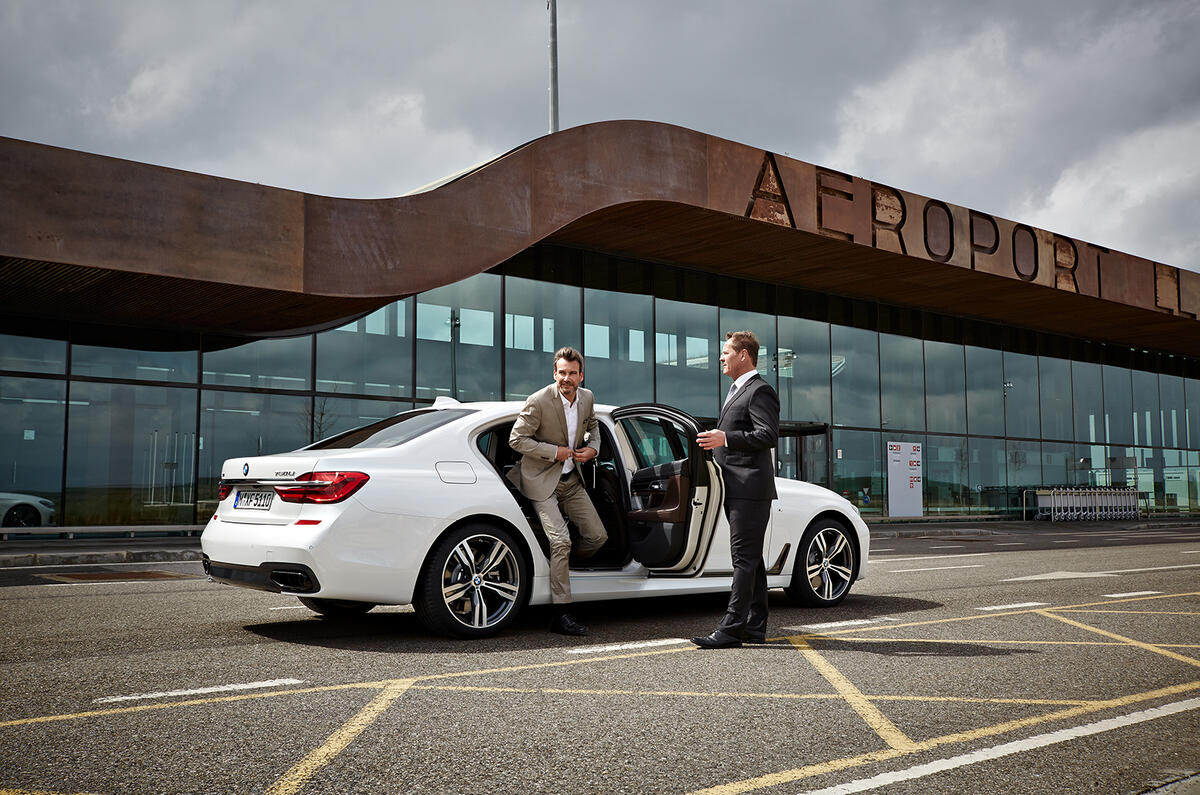
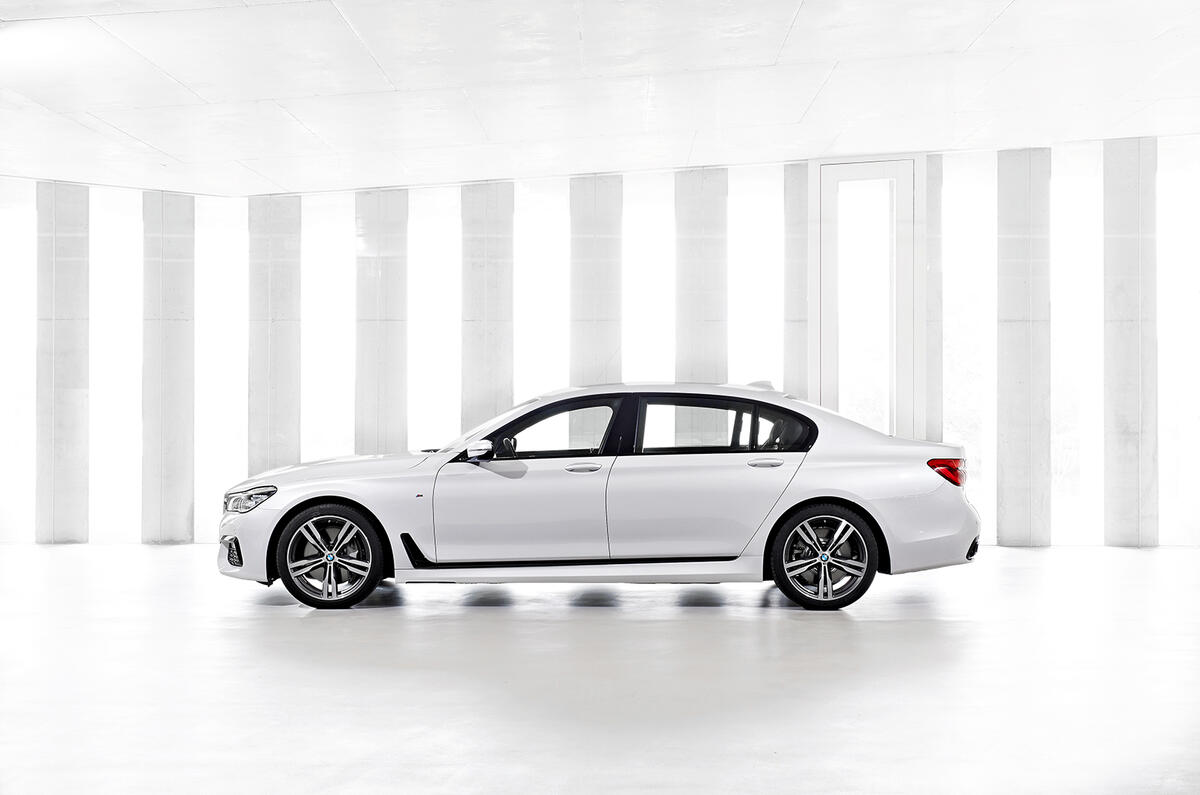



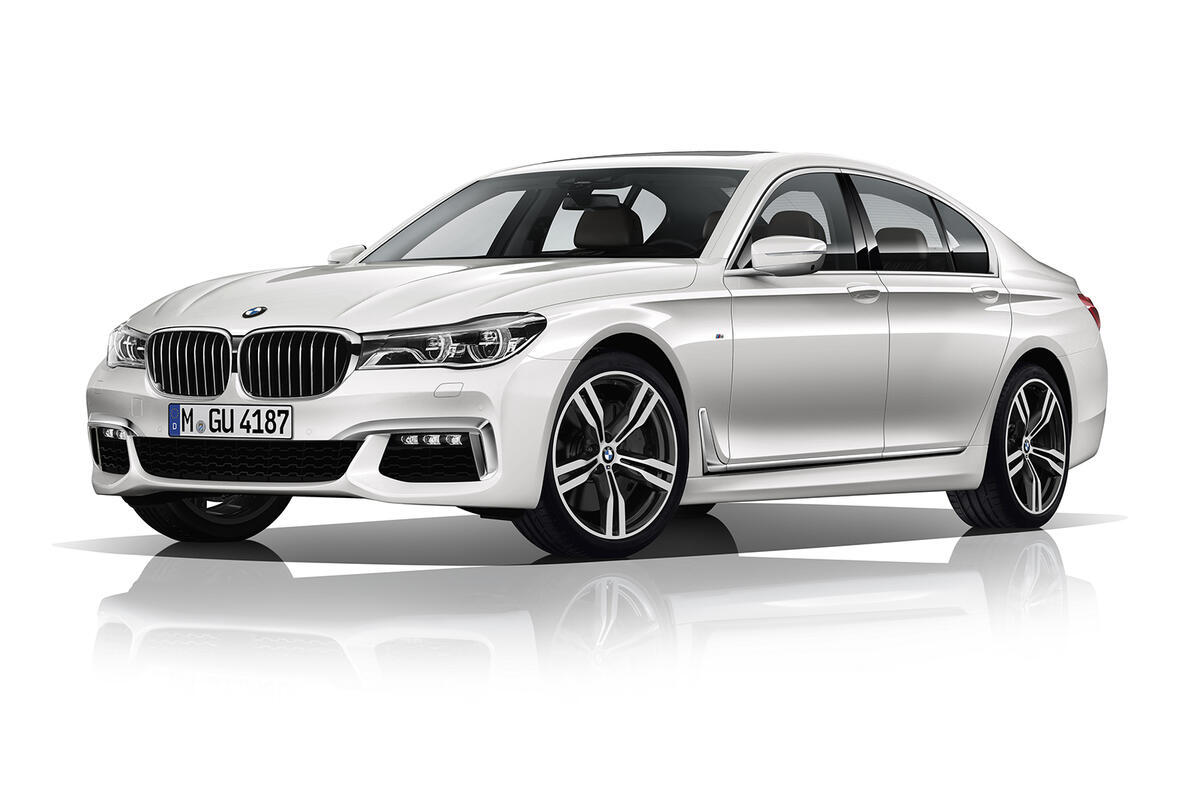

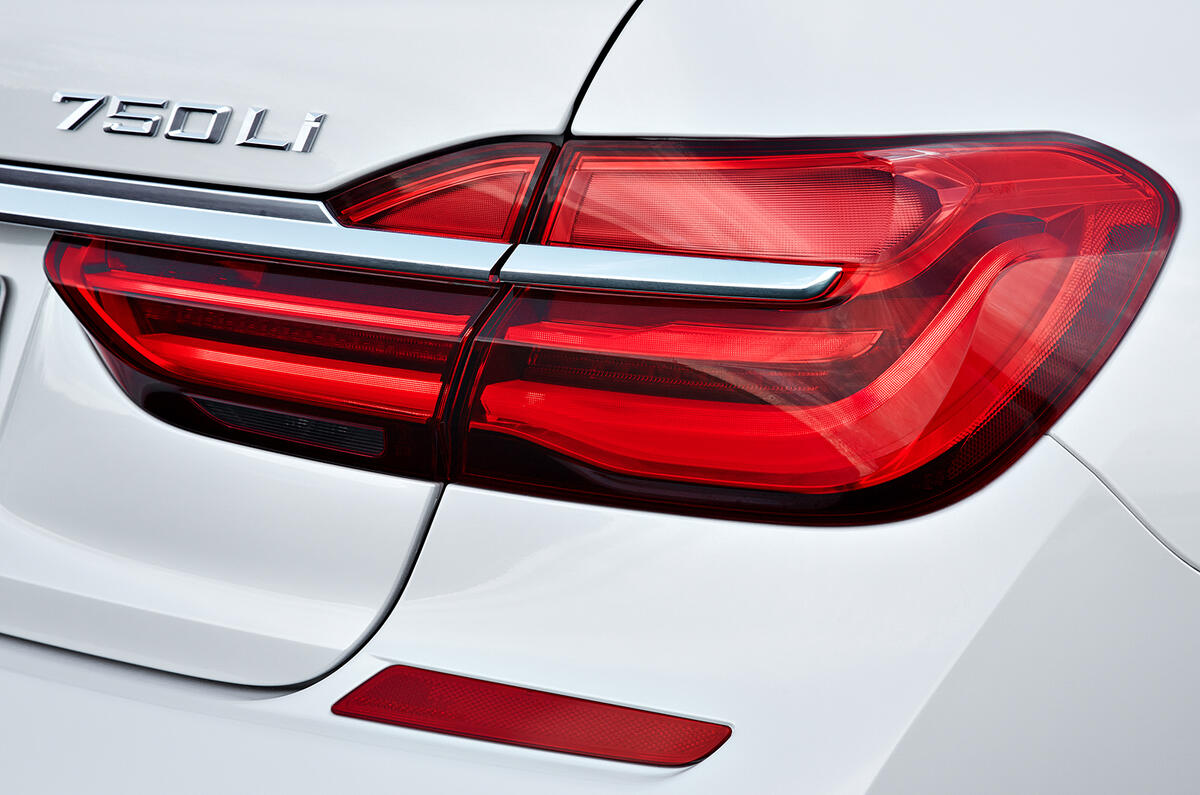
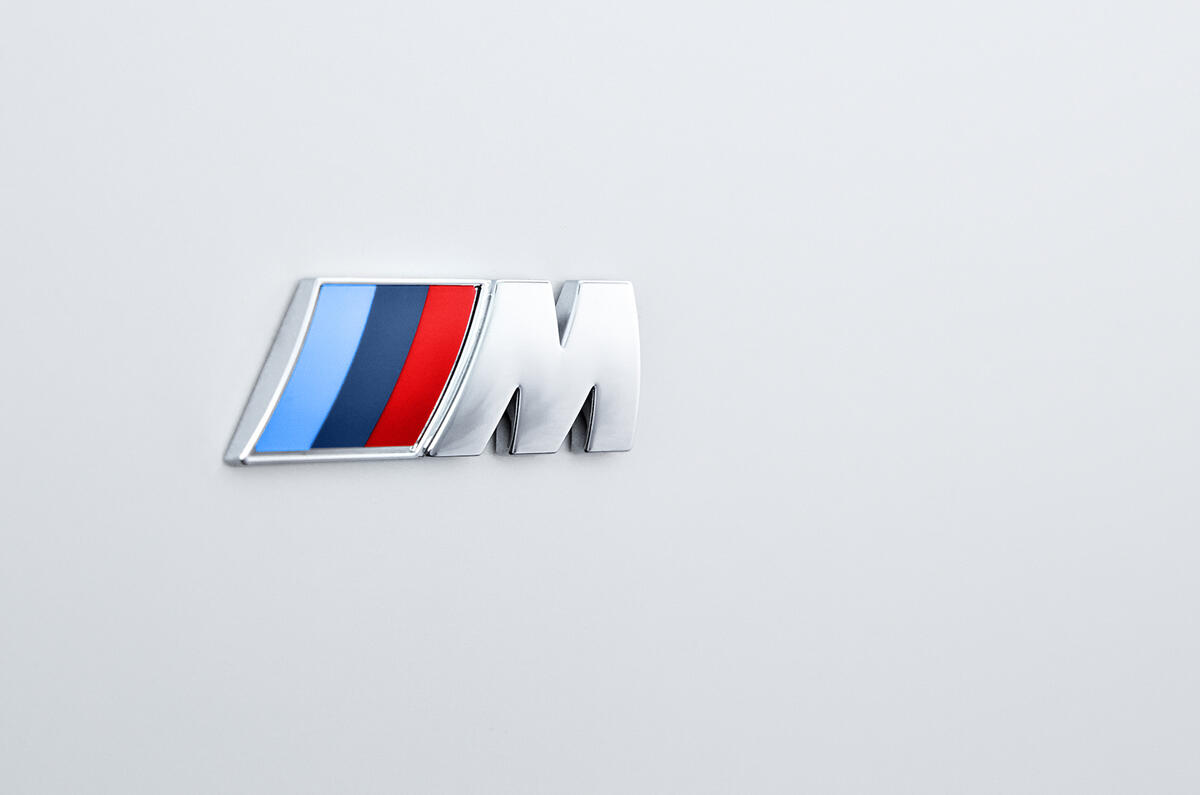



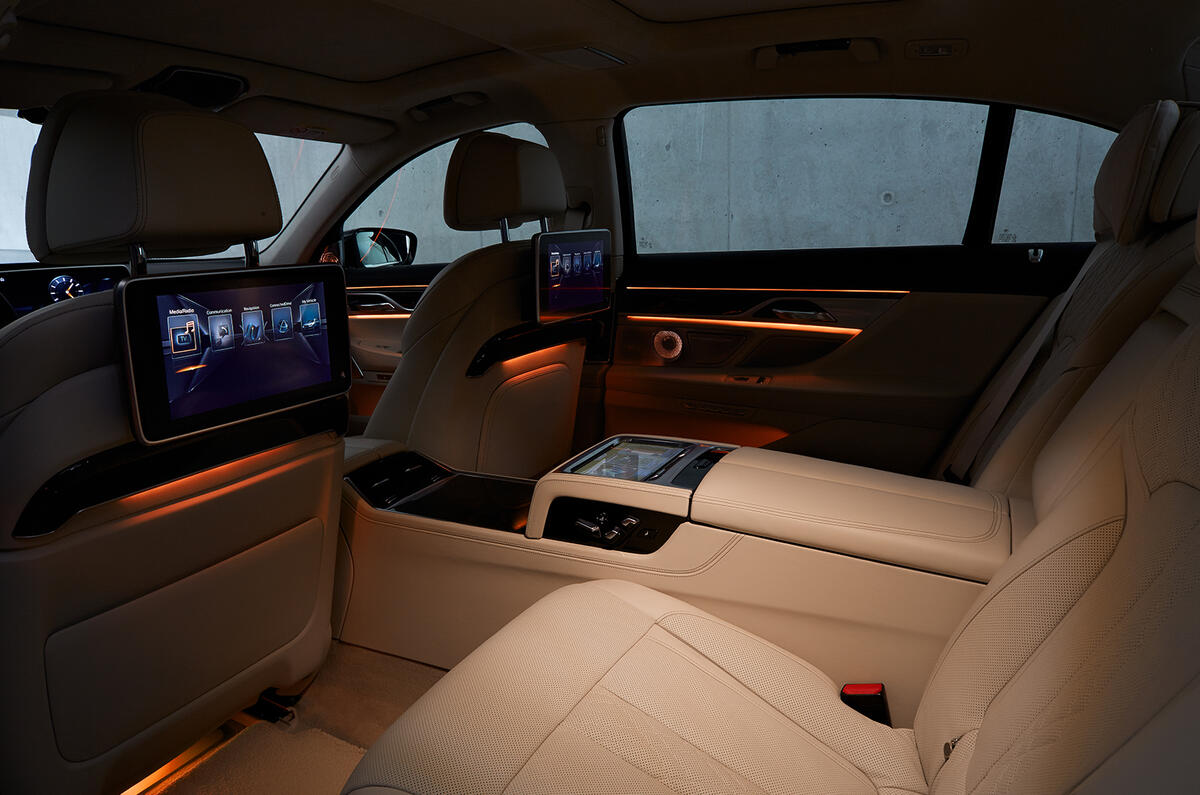






















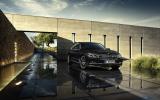

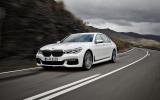





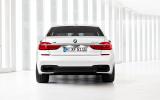













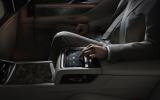

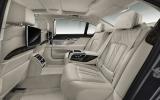







Join the debate
Add your comment
Mercedes, Jaguar, Audi,
Well I look at it properly. I
Boring design, both inside and outside.
Sorry BMW, this car is a none event for most, except for your die-hard fans, even they will think twice.